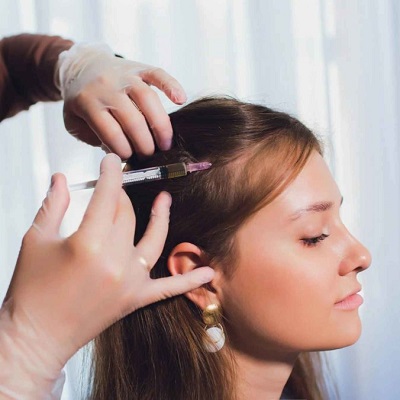Introduction
Platelet-Rich Plasma (PRP) hair therapy has emerged as a groundbreaking treatment for hair loss, leveraging the body’s natural healing properties to stimulate hair growth. PRP therapy involves drawing a small amount of the patient's blood, processing it to concentrate the platelets, and injecting this plasma into the scalp. This treatment has garnered attention for its effectiveness in promoting hair regrowth and improving hair quality. However, the success of PRP therapy hinges not only on the procedure itself but also on the post-treatment care. Proper aftercare is crucial to maximize the results and ensure that the hair follicles receive optimal support for growth. This article explores essential post-treatment strategies to help patients achieve the best outcomes following PRP hair therapy at PRP Hair Treatment Clinic Oman.
Understanding PRP Therapy
PRP therapy involves three key steps: blood collection, centrifugation, and injection. During the blood collection phase, a sample of the patient’s blood is drawn. The sample is then processed in a centrifuge to separate the platelet-rich plasma from other components of the blood. Finally, the concentrated PRP is injected into targeted areas of the scalp. The growth factors in PRP help stimulate dormant hair follicles and encourage new hair growth.
Immediate Post-Treatment Care
1. Avoid Touching or Massaging the Scalp
Immediately following PRP therapy, it is crucial to avoid touching or massaging the treated areas of the scalp. This precaution helps prevent infection and ensures that the PRP remains in place to stimulate the hair follicles effectively.
2. Avoid Washing the Hair
Patients should refrain from washing their hair for at least 24 to 48 hours after the treatment. This waiting period allows the PRP to settle and be fully absorbed by the hair follicles.
3. Refrain from Using Hair Products
It is advisable to avoid using hair products such as shampoos, conditioners, or styling products for a few days post-treatment. Harsh chemicals or fragrances can irritate the scalp and potentially affect the effectiveness of the therapy.
Short-Term Post-Treatment Care
1. Maintain a Clean Scalp
After the initial 48-hour period, patients should gently wash their hair using a mild, sulfate-free shampoo. This helps keep the scalp clean and reduces the risk of infection without disrupting the healing process.
2. Avoid Direct Sunlight and Heat
Exposure to direct sunlight and excessive heat, such as from hot showers or hair dryers, should be minimized for at least a week after the treatment. Sunburn or heat can exacerbate scalp irritation and negatively impact the healing process.
3. Limit Physical Activity
Strenuous physical activities and heavy exercise should be avoided for at least 48 hours after the procedure. Excessive sweating can irritate the scalp and may hinder the effectiveness of the PRP therapy.
Long-Term Post-Treatment Care
1. Follow a Healthy Lifestyle
A balanced diet rich in vitamins and minerals is beneficial for hair health. Nutrients such as iron, biotin, and vitamins A and C support hair growth and overall scalp health. Staying hydrated and avoiding smoking can also enhance the results of PRP therapy.
2. Regular Scalp Care
Incorporate regular scalp massages and use of gentle hair products to maintain scalp health. Scalp massages can increase blood flow to the hair follicles, promoting healthier hair growth.
3. Adhere to Follow-Up Appointments
Attending follow-up appointments with your healthcare provider is essential for monitoring progress and addressing any concerns. Your provider may recommend additional PRP sessions or other complementary treatments based on your individual needs.
Potential Side Effects and When to Seek Help
While PRP therapy is generally safe, some patients may experience mild side effects such as redness, swelling, or discomfort at the injection sites. These symptoms usually resolve within a few days. However, if severe pain, persistent redness, or signs of infection (such as fever or pus) occur, it is important to seek medical attention promptly.
Conclusion
Post-treatment care is a critical component of achieving the best possible results from PRP hair therapy. By following the recommended guidelines, including avoiding scalp irritation, maintaining a healthy lifestyle, and adhering to follow-up care, patients can significantly enhance the efficacy of their treatment and promote optimal hair growth. As with any medical procedure, individual experiences may vary, so it is essential to consult with a healthcare professional for personalized advice and care. With the right post-treatment strategy, patients can maximize the benefits of PRP therapy and enjoy healthier, fuller hair.





Comments